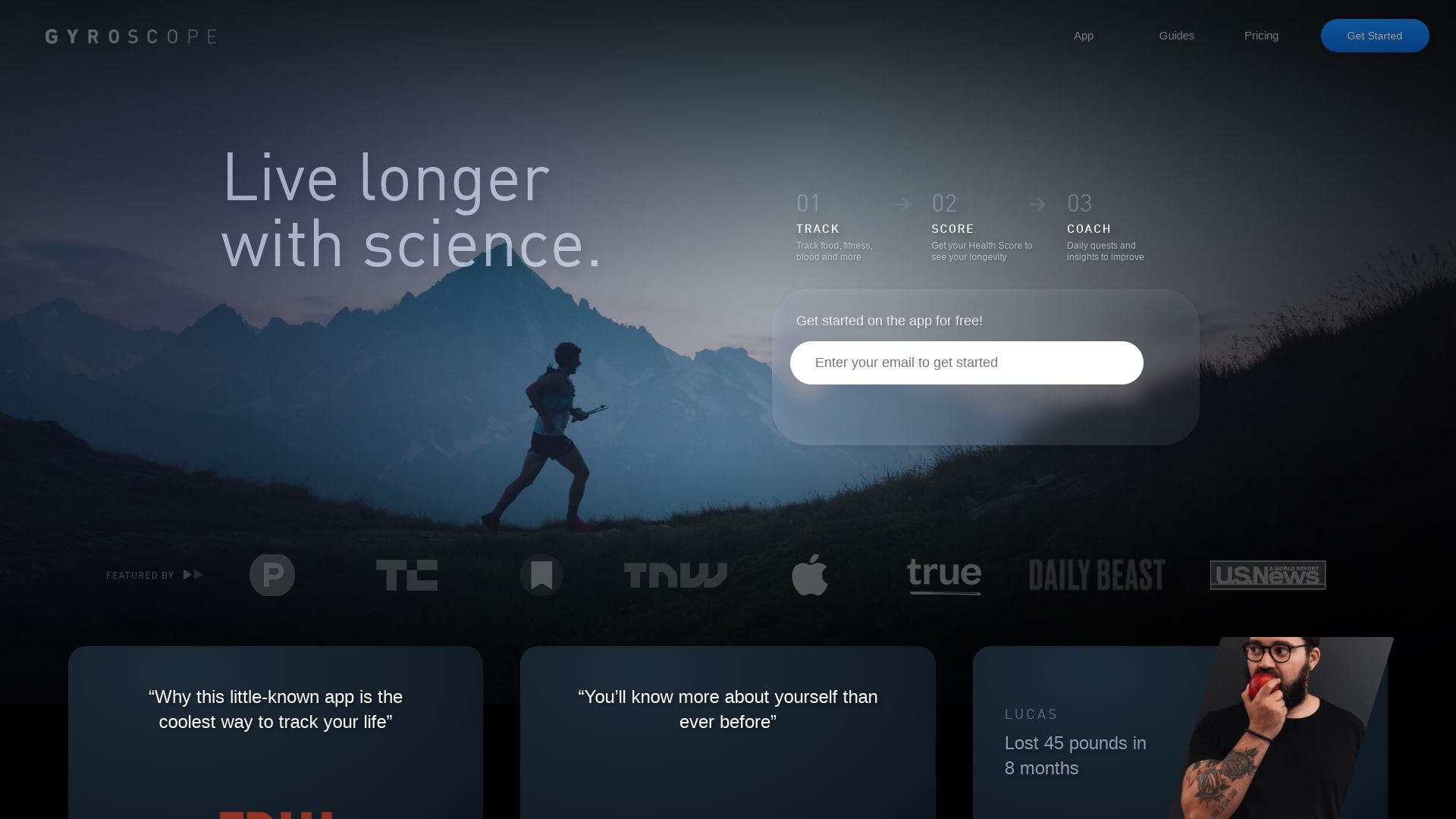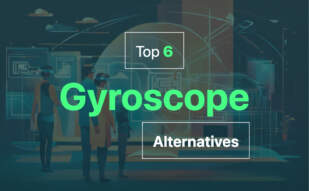The Church of Jesus Christ of Latter-day Saints (LDS) has a rich history of embracing communication technology since the 19th century, from telegraphs to digital tech like CDs and DVDs distributed in multiple languages. Utilizing satellite networks since 1957, LDS has stayed at the forefront of leveraging technology for broader communication. The Church’s online presence has expanded with separate sites like FamilySearch.org and Mormon.org, each serving unique purposes.

For those exploring alternatives to LDS, options encompass a range of technologies, including Laser, LiDAR, LiDAR SLAM, VSLAM, SLAM, Gyroscope, and more.
Laser
Birthed in the early 1900s through the foresight of Albert Einstein, Laser technology has grown into a multi-billion dollar industry. It carries a myriad of applications in medicine, industry, research, and beyond.
Laser Top Features
- Efficiency: Thanks to Kumar Patel’s development at AT&T Bell Labs in 1963, CO2 lasers are not just efficient but cost-effective.
- Versatility: Used in supermarket scanners, data transmission, and industrial assembly lines, lasers adapt across sectors.
- High peak power: High peaks in power make lasers perfect for diamond drilling and military rangefinders.
| Applications | Developed by | Year of Development |
|---|---|---|
| Ruby Laser Prototype | Theodore Maiman, Hughes Research Laboratories | 1960 |
| Commercial Laser Materials Processing | Peter Houldcroft | 1967 |
| CO2 Laser | Kumar Patel, AT&T Bell Labs | 1963 |
Laser Limitations
- Cost: Although efficient, initial setup and maintenance cost may be high.
- Technical Expertise: Management and troubleshooting of lasers can require technical know-how.
Laser Use Cases
Use case 1 – Research
Lasers, particularly those in the atmospheric analysis and energy generation fields, aid the progression of many areas of research.
Use case 2 – Medicine
Surgical procedures and other therapeutic applications utilize lasers for precision and efficiency.
Use case 3 – Industry
Industrial lasers allow for detailed work such as drilling, cutting, or welding metals, optimizing the manufacturing process.
LiDAR
Originally developed more than half a century ago, LiDAR (Light Detection and Ranging) is an established technology that employs lasers and sensors to generate precise, high-resolution, three-dimensional (3D) imaging—a principle attribute in applications such as autonomous vehicles, spatial imaging for smartphones like the iPhone 12 Pro, and geological surveying. Despite its decades-long history, LiDAR only entered the consumer market relatively recently, after costs decreased and technology improved, particularly in the context of solid-state lights and time of flight sensing, to measure distant measures.
LiDAR Top Features
- High-accuracy 3D imaging and object detection.
- Used widely in automation applications, including driverless vehicles.
- Time-based flight sensing for accurate distance measurements.
- Preferred sensor for driver-assisted cars, providing crucial data for autonomous functions like adaptive cruise control.
- Flexibility: Used in consumer electronics, infrastructure planning, geographical mapping, and more.
| Feature | Benefit |
|---|---|
| High Accuracy | LiDAR, with its shorter wavelength, boasts greater accuracy than Radar—within 6 inches in flat, open terrains and 1-2 feet in steep or forested areas. |
| Flexible Wavelengths | Commonly used wavelengths of 850nm,905nm, or 1550nm provide adaptability to various use-cases. |
| Autonomous Capabilities | LiDAR is a fundamental technology in autonomous vehicles, enabling detection of obstacles and making accurate mapping possible. |
LiDAR Limitations
- Performance reliability can be heavily reliant on optimal laser power and wavelengths.
- Laser and light levels often require compensation over broad dynamic ranges, utilizing large area reflectance targets—a process that can complicate the use and implementation of LiDAR.
LiDAR Use Cases
Use case 1: Autonomous Cars
LiDAR is a pivotal technology in autonomous vehicles, aiding in precise object detection and distance measurement—profoundly crucial for safe, reliable, and efficient operations.
Use case 2: Consumer Electronics
Gadgets, such as the iPad Pro and iPhone 12 Pro, leverages LiDAR technology for robust imaging and Augmented Reality (AR) applications, fostering advanced user experiences.
Use case 3: Geological & Infrastructure Planning
LiDAR’s proficiency in creating accurate 3D mapping data makes it an indispensable tool in geological studies and architectural planning—helping scientists to understand land deformation and architects to visualize construction blueprints effectively.
LiDAR SLAM
An innovation bred by Australia’s national science agency, CSIRO, in collaboration with 3D Laser Mapping, LiDAR SLAM is a dynamic Spatial Imaging solution. It has won numerous awards, continually iterating its technology into the next-gen algorithm, GeoSLAM Beam.
LiDAR SLAM Top Features
- Continuous-Time SLAM for frequent position calculation, essential for laser scanning.
- GeoSLAM Beam and Connect, providing optimized SLAM processing tailored to the capturing environment.
- Outperforming other SLAM mapping systems when combined with the Velodyne VLP-16 sensor.
- Efficient mobile SLAM system that eliminates the need for multiple static setups.
| Key Feature | Description |
|---|---|
| Geo-referencing | Effortless georeferencing of data across various environments. |
| Versatility | Outperforming GPS in indoor spaces, forests, and urban landscapes where signals can be blocked. |
| New Era Tech | Use of sensor signal processing and pose-graph optimization to achieve SLAM. |
LiDAR SLAM Downsides
- Dependence on regular software updates for improved performance.
- Manual intervention required for creating and redrawing SLAM maps when furniture or building layout is adjusted.
LiDAR SLAM Use Cases
Use case 1: Autonomous Vehicles
To map and localize within dynamically changing environments, enabling safer, more accurate navigation.
Use case 2: Robotics
Serves as the eyes of Automated Guided Vehicles (AGVs) and Autonomous Mobile Robots (AMRs), expected to see global shipments worth up to $18B by 2027.
Use case 3: Domestic Applications
Integral for tasks like navigating home robot vacuums or drone deliveries in unknown environments.
VSLAM
An innovative approach to autonomous navigation, VSLAM, or Visual Simultaneous Localization and Mapping, promises unparalleled benefits in a multitude of practical applications. Perfectly accommodating our visual realm, it processes mapping and localization in a consistent rhythm, employing varied algorithms to catalyze its efficiency.
VSLAM Top Features
- Simultaneous Mapping and Localization: Enables robot autonomy for a vast range of applications such as home robot vacuums and self-driving cars.
- Dual Components: Sensor signal processing for the front-end and pose-graph optimization for the backend enhance precision.
- Advancement Potential: Evolving edge computing plus lidar enhancements may tip global sector growth from $2.9B to an estimated $18B by 2027.
- Variety of Methods: Offers multiplicity for optimal usage, sparse methods for simpler applications and dense methods for complex imaging.
| Component | Role |
|---|---|
| Sensor Signal Processing | Front-end operation, feeding information into the system |
| Pose-graph Optimization | Backend operation, ensures optimal pose estimation |
| Algorithms | Augment system efficiency and processing speed. |
VSLAM Limitations
- Error Accumulation: VSLAM systems can accumulate errors over time, leading to inaccuracies in localization.
- Localization Failure: The system can occasionally fail to correctly localize itself.
- Resource Consumption: High image and point cloud processing computational costs.
VSLAM Use Cases
Use case 1: Autonomous Vehicles
VSLAM helps autonomous vehicles identify the lane lines, traffic lights, and other cars, driving significant enhancements within the automotive industry.
Use case 2: Medical Applications
In medicine, VSLAM assists in surgeries and medical explorations, helping in diagnostics and other complex procedures.
Use case 3: Entertainment
In the entertainment industry, like The Walt Disney Company’s patent for a “Virtual World Simulator” operates on SLAM technology, VSLAM has the potential to create unprecedented virtual experiences.
SLAM
Unfolding the panoramic potential of Augmented Reality, let me introduce you to SLAM: Simultaneous Localization and Mapping. A cutting-edge technique that allows autonomous vehicles to form a real-time map while localizing their location within that map, fully capitalizing on data from an assortment of sensors.
SLAM’s Leading Features
- Interplay of Front and Back End: SLAM effectively employs sensor signal processing (front-end) and pose-graph optimization (back-end) to deliver accurate results.
- Visual SLAM: An enticing fusion of lens cameras, stereo cameras, and depth cameras which is streamlined by graph-based optimization.
- Lidar SLAM: Making use of high-speed laser sensors for precise measurements, this variant is ideal for high-speed vehicles. Depth measurements thus obtained are key to map building in SLAM.
- Landmark Recognition: An effective countermeasure against localization errors accumulating over time, aiding in maintaining the authenticity of results.
- Parallel Processing: The perfect answer to high computational costs, this approach renders SLAM even more effective and time-efficient.
| SLAM Variant | Suitable Usage |
|---|---|
| Visual SLAM | Conventional AR applications involving mobile mapping, robot navigation and the like. |
| Lidar SLAM | High-speed vehicles, flight simulators, gaming environments and scenarios requiring precise measurements. |
SLAM’s Limiting Factors
- There is a potential risk of localization errors that accumulate over time, resulting in a “loop closure problem”. The actual route may diverge from the mapped one due to these cumulative errors.
- The image processing and optimization required in SLAM are computationally heavy, necessitating a robust hardware setup.
SLAM Use Cases
Home Robot Vacuums
For devices like home robot vacuums, SLAM’s sensor integration and mapping capabilities can make these devices more efficient and accurate in cleaning your home.
Warehouse Mobile Robots
In large warehouses, mobile robots with SLAM can produce real-time maps, ensuring efficient movement, object detection, and obstacle avoidance.
Autonomous Vehicles
For self-driving cars and drones, SLAM’s precise measurement and high-speed data processing can be integral for ensuring safety and efficiency.
Gyroscope

Unleash the power of spatial awareness and motion sensitivity with Gyroscope, an angular velocity sensor that’s transforming the world of electronics.
Top Features of Gyroscope
- High-Quality Quartz Crystal: This gem, powered by Epson, allows Gyroscope to accurately track changes in rotational angles.
- Versatility: Gyro sensors are essential components in a wide array of devices, from smartphones and gaming consoles to industrial machinery.
- Accuracy: Gyroscope ensures precise angle measurement, thanks to its innovative construction and use of quality material.
- Energy Efficient: Improving user experience with minimal battery power you say? Gyroscope does that!
| Feature | Benefit |
|---|---|
| 3-Axis Motion Sensing | Enhances sensitivity and precision in motion-controlled gadgets. |
| Impact resistance | Offers robust performance even in rigorous conditions. |
| Usage versatility | Fits into commercial applications like camera shake correction, and even robot vacuum cleaners. Now, that’s stylish! |
Downsides to Gyroscope
- Dependence on material and structural differences can sometimes meddle with accuracy in angular velocity measurements.
- Despite its exquisite performance, the cost of a precise gyroscope can be a limiting factor for some users.
Gyroscope Use Cases
Use Case 1: Gaming Consoles
With Gyroscope built into your gaming console, experience enhanced motion sensing, making your gaming exploits much more immersive and rewarding.
Use Case 2: Robotics
Robots with Gyroscope onboard can navigate more accurately, and conduct operations with increased precision, efficiently revolutionizing this innovative field.
Use Case 3: Smartphones
Gyroscope takes smartphones to the next level, enabling more accurate motion control for a holistic user experience. Nailing that perfect selfie angle just got easier!
Hannah Stewart
Content writer @ Aircada, tech enthusiast, metaverse explorer, and coffee addict. Weaving stories in digital realms.





